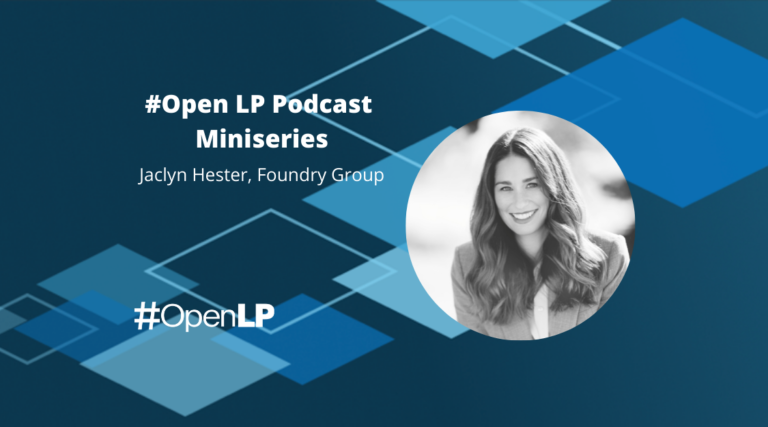This article was originally posted on Sapphire Ventures Perspectives in Jan. 2016.
Sapphire Partners investment team backs emerging and established fund managers with deep expertise in enterprise and consumer technologies. As a member of this team I have the pleasure of meeting with hundreds of fund managers who share our excitement for helping early-stage entrepreneurs become global category leaders. During these meetings we often think about what motivates the fund managers, the origins of their firm and how and why the firm was created in the first place. This blog series attempts to answer those questions by offering different perspectives from VC’s on the thoughts and efforts that go into building a successful venture capital firm. In this interview, we discuss the development of Point Nine Capital in light of their recent closing of Point Nine Capital III of EUR55M. Sapphire Ventures is a limited partner in Point Nine Capital.
Sapphire Ventures (SV): How did you initially come up with your investment thesis at Point Nine Capital?
Pawel Chudzinski (PC): Coming up with our thesis has been a process of discovery and learning. During the course of our first fund, we were focused on making Internet and consumer investments in Berlin. Over time, it became more and more clear what we liked and didn’t like. For the second fund, we focused on SaaS, marketplaces, and e-commerce investments. Then, for the third fund, we moved away from e-commerce to focus more on SaaS and marketplaces. Throughout the course of all funds, we have been early stage investors and see ourselves as large angel investors versus venture capitalists. We are also very much an international VC, which was born out of seeking SaaS investments in other geographies, mainly though Christoph discovering companies online that are based in other countries, and my investment experience in both Poland and Germany.
Christoph Janz (CJ): Yes, I agree, discovering our thesis was not something that happened overnight. It was very much learning by doing. Before Point Nine, I was an active angel investor while Pawel was investing at Team Europe. I had been developing a thesis focused on SaaS and marketplaces. For example, what struck me when I invested in Zendesk in 2008 was the “consumerization” of traditional enterprise, which made it easy as a former consumer Internet entrepreneur to fall in love with these new products. Discovering enterprise tools which I could try online, which was fundamentally different than the old model, really made me think that there were attractive opportunities to invest in the space.
SV: What is Point Nine’s greatest strength?
PC: We are focused investors, especially in SaaS. People know us because of what they have read from Christoph’s blog and they know how supportive we are as early stage investors. We become less relevant when companies grow up, but by then, they hopefully know what they are doing and we become less applicable.
SV: Christoph, do you agree?
CJ: We can relate to entrepreneurs because of our entrepreneurial background. Also, people notice that we don’t complicate terms sheets and don’t try to leverage contracts to unfairly benefit our own economics. We tend to keep things simple. Entrepreneurs really appreciate that as it can be a nightmare to go through the fundraising process if a VC is not friendly on other side. We also offer hands-on support for SaaS businesses and connect entrepreneurs with other relevant entrepreneurs. Usually, when entrepreneurs talk with other entrepreneurs in our network, they become convinced that PNC is a good partner.
SV: How did you decide on fund structure and the size of the fund?
PC: For the first fund, we wanted to raise EUR5–10 million to do 20 investments. We thought this was feasible. Based on our investment pace from Fund I, we learned that we could manage investing in 10 companies per year. Coupled with our initial check sizes and three to five year investment period, it became clear that Fund II would require roughly EUR20 million for initial investments in the 40 or so companies we wish to invest per fund. When taking into consideration the follow-on capital requirements for those companies, our expectation for an appropriate fund size roughly doubled to EUR40 million, which was the size of our second fund. In the current fund, we did the same exercise, but increased the reserves for follow-on investments slightly, so we ended up closing our third fund recently with EUR55 million in commitments.
SV: How did you and Christoph become partners?
PC: It began by working on a deal with Christoph in 2009. When I was investing Team Europe in 2009, I was able to convince Christoph to get involved as an investor. During the course of the first fund, Christoph and I began discussing potential investments together and co-investing in several companies. In fact, during the first fund, Team Europe (a predecessor to Point Nine) made 22 investments, and Christoph and I co-invested in 17 together. When I thought about raising the next fund, it was natural to work together in a more formalized way.
SV: And Christoph, why was Pawel the right choice for a partner?
CJ: We were aligned in our thinking, had built trust through the experience of working together and I was confident that Pawel was good at making the right decisions, asking the right questions, helping companies, and scaling operations. Personally, it also helped me to discuss potential investment opportunities as a small team and have someone challenge me. When Point Nine began raising its second fund, I thought it made sense to formalize the partnership.
SV: How did you think about bringing on other members of the investment team?
PC: We started with one associate, so there were three people total. Then, when we raised a larger fund, we went through a recruiting process to find another associate, but instead we found two people we liked, so we hired both. That is how it is today, five total investors, and an intern every now and then. We will probably expand, but we will go slowly.
CJ: Having additional team members at the seed stage is very important because we see a high number of potential investments. Having associates allows us to see everything and also allows us to be physically present at many events, which helps with branding and getting the word out on Point Nine. Also, having additional team members gives us new perspectives, such as Rodrigo with his engineering expertise and Mathias with his background in M&A.
SV: What was your initial fundraising strategy for your first institutional fund (Point Nine Capital II)?
CJ: We first approached previous investors that were investors in our first fund, started under the Team Europe name. After talking with private individuals, we had roughly EUR10–12 million in commitments. That was a good start which also allowed us to have a first close and start investing capital early before talking to institutional investors. We did not have any strong relationships with institutional investors and as most LPs want to watch performance over time, it could have taken years before an institutional commitment. However, we were lucky and able to raise capital more quickly from institutional investors than we had originally thought.
SV: How did this happen so quickly? Why were you able to convince institutional investors to get involved in the second fund?
PC: When we initially approached institutional investors, they viewed our second fund as a first time fund. Our first fund was essentially just viewed as a small, angel fund. In 2012, investors were also heavily discounting European venture, so when we went to events and approached LPs, the sentiment was largely negative. Eventually, we were able to get an anchor investor after a thorough diligence process, and additional institutional support followed. Getting an initial supporter that was willing to act as an anchor was key for us in closing our second fund.
SV: Did anything change with your fundraising strategy for the third fund?
CJ: Not really, we were very fortunate that our existing LPs were happy with our performance and wanted to continue to support us. Versus Fund II, there was a day and night difference because we already had the support of our LPs.
SV: What was your greatest learning during the fundraising process?
PC: That institutional investors can vary a lot in their preferences, appetite, style, and other factors. Understanding this and knowing who to talk to and when is critical to fundraising success.
CJ: Anticipating what will be asked by potential LPs and preparing data ahead of time that is easily accessible. Having a complete and thorough data room can save a lot of time. As well, know that the legalities of closing a fund can take a long time, so be patient.



